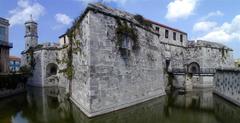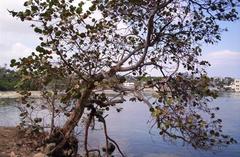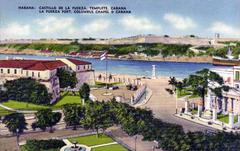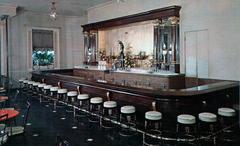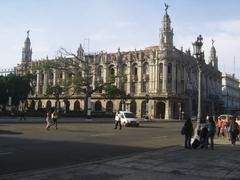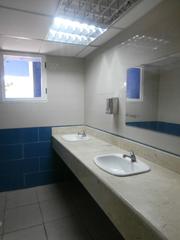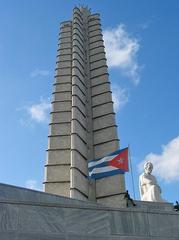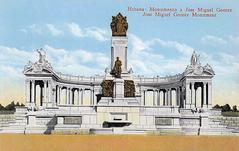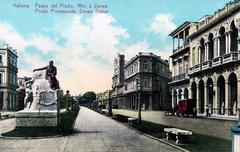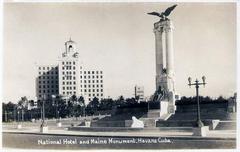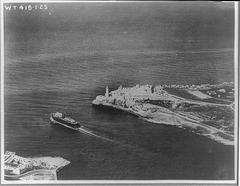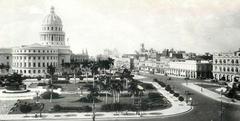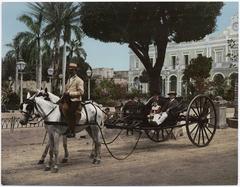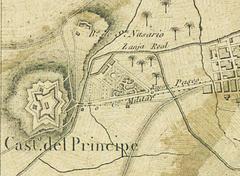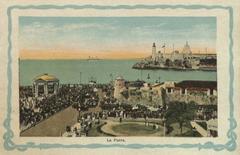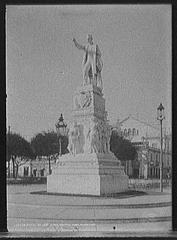
Castillo de Atarés, Havana: Visiting Hours, Tickets, and Historical Sites Guide
Date: 04/07/2025
Introduction
High atop La Loma de Soto in Havana stands the Castillo de Santo Domingo de Atarés, a striking example of Cuba’s colonial military heritage and architectural innovation. Built between 1763 and 1767 in response to the British occupation of Havana, this hexagonal fortress was designed to reinforce the city’s defenses and prevent future invasions. Its irregular shape, unique among Havana’s fortifications, and its commanding panoramic views over the harbor make it both a historical landmark and a must-visit destination for travelers interested in history, architecture, and Cuban culture (EcuRed, Diario de Cuba, Lonely Planet).
Table of Contents
- Introduction
- Origins and Construction
- Architectural Features
- Strategic Role in Havana’s Defense
- Historical Evolution
- Restoration and Museum Conversion
- Visitor Information: Tickets, Hours, and Accessibility
- Travel Tips for Visiting Castillo de Atarés
- FAQs
- Nearby Historical Sites
- Visuals and Media Recommendations
- Summary and Call to Action
- References
Origins and Construction
The construction of Castillo de Atarés was a direct response to the vulnerabilities exposed by the British occupation of Havana in 1762. The Spanish Crown initiated a comprehensive upgrade of the city’s defenses, with Atarés designed by engineer Silvestre Abarca and constructed under the supervision of Agustín Crame. Work began in 1763 and concluded in 1767, with the fort named in honor of the Count of Atarés (EcuRed, Diario de Cuba). The distinctive irregular hexagonal design set it apart from other fortresses in the city.
Architectural Features
Castillo de Atarés breaks from the bastioned tradition by featuring an irregular hexagonal shape without traditional bastions. Each of its six vertices is topped with a hexagonal sentry box (garita), and the structure is encircled by a dry moat and covered walkway (Diario de Cuba). The fort is built from local limestone, many stones still bearing the marks of 18th-century stonemasons.
A functional drawbridge marks the entrance, topped by the Spanish royal coat of arms and commemorative plaques. Inside, the fort’s parade ground is surrounded by six bombproof vaulted chambers, historically used as barracks, storerooms, and an armory. The underground cisterns provided water for a garrison that grew from 100 to 250 soldiers over the centuries (EcuRed).
Strategic Role in Havana’s Defense
Together with Fortaleza de San Carlos de la Cabaña and Castillo del Príncipe, Atarés completed a defensive triangle protecting the city from landward attacks. Its hilltop position provided views over Havana and the bay, making it an effective deterrent to invaders. The fort was equipped with 21 heavy cannons, and its design made it nearly unassailable (Diario de Cuba, EcuRed).
Historical Evolution
Colonial and Republican Eras
Originally serving as a military garrison and armory, Atarés later functioned as a prison and was notably used during the Machado dictatorship for detaining political opponents. In 1933, it was bombarded during a military uprising, one of the few times it saw direct conflict (EcuRed).
20th Century and Beyond
The fort was modernized during the U.S. intervention (1898–1902) with hydraulic systems and skylights. Its military role persisted until it fell into disuse and disrepair in the late 20th century, setting the stage for its restoration (Diario de Cuba).
Restoration and Museum Conversion
In 2013, the Oficina del Historiador de la Ciudad initiated a comprehensive restoration, with international support, to recover authentic architectural elements and open the fort to the public (OnCuba News). Restoration efforts revealed historical artifacts, now displayed in situ. The site now houses a museum with exhibits inspired by Renaissance military engineering, including models based on Leonardo da Vinci’s designs (EcuRed).
Visitor Information: Tickets, Hours, and Accessibility
Opening Hours:
- Tuesday–Sunday: 9:00 AM – 5:00 PM
- Closed Mondays and public holidays
Ticket Prices:
- General Admission: 5 CUP (Cuban pesos)
- Discounts for students, seniors, and children
- Tickets sold onsite; advance booking recommended during peak seasons (Lonely Planet)
Accessibility:
- The site’s historic nature means some uneven surfaces and stairs. Main exhibition spaces are accessible, but upper levels and the drawbridge may be challenging for those with limited mobility.
Guided Tours:
- Available in Spanish and English. Advance booking is recommended.
Getting There:
- Located on the western edge of Havana, atop La Loma de Soto, about 2 km from Old Havana. Best reached by taxi or classic car. Public transport is limited (Tripadvisor).
Travel Tips for Visiting Castillo de Atarés
- Best Time to Visit: Early morning or late afternoon for cooler temperatures and optimal lighting.
- What to Bring: Water, sun protection, and comfortable shoes. No shop or café onsite.
- Language: Spanish is primarily spoken; a translation app or basic phrases may be helpful (Travel Yes Please).
- Currency: Only Cuban pesos (CUP) accepted; bring small denominations (Lonely Planet).
- Health: Carry bottled water and any necessary medications—facilities are basic.
Frequently Asked Questions (FAQs)
Q: What are the visiting hours?
A: Tuesday–Sunday, 9:00 AM to 5:00 PM; closed Mondays.
Q: How much are tickets?
A: 5 CUP for general admission, with discounts available.
Q: Are guided tours offered?
A: Yes, in Spanish and English by advance request.
Q: Is the site wheelchair accessible?
A: Partial accessibility—some areas have uneven surfaces and stairs.
Q: Can I take photos?
A: Yes, photography is encouraged, especially from the ramparts.
Nearby Historical Sites
- Fortaleza de San Carlos de la Cabaña
- Castillo del Morro
- Old Havana’s UNESCO World Heritage district
- Museo de la Revolución
- Malecón
Combine your visit to Atarés with these attractions for a comprehensive Havana experience (Lonely Planet, Tripadvisor).
Visuals and Media Recommendations
- High-quality images of the exterior, garitas, drawbridge, and panoramic views.
- Use alt tags such as “Castillo de Atarés panoramic view” and “Havana historical sites Castillo de Atarés.”
- Explore available virtual tours through official museum or tourism sites.
Summary and Call to Action
Castillo de Atarés is a unique testament to Havana’s resilience and colonial ingenuity, distinguished by its hexagonal structure, operational drawbridge, and panoramic vantage. Its transformation from a strategic fortress to a museum highlights Cuba’s dedication to preserving its cultural legacy. With accessible hours, affordable prices, and enriching guided tours, Atarés stands as an essential stop for travelers seeking a deeper understanding of Havana’s past.
Plan your visit today:
- Download the Audiala app for guided tours and up-to-date visitor information.
- Follow us on social media for travel inspiration, event updates, and exclusive content.
- For further resources, consult EcuRed, Diario de Cuba, and Lonely Planet.
References
- Castillo de Atarés in Havana: History, Tickets, Hours & Travel Tips (EcuRed)
- Castillo de Atarés: A Historic Gem Among Havana Historical Sites (Diario de Cuba)
- Castillo de Atarés Overview (Wikipedia)
- Castillo de Atarés Visiting Hours, Tickets, and Visitor Guide (Lonely Planet)
- Castillo de Atarés: From Spanish Fortress to Museum with Works by Da Vinci (OnCuba News)



